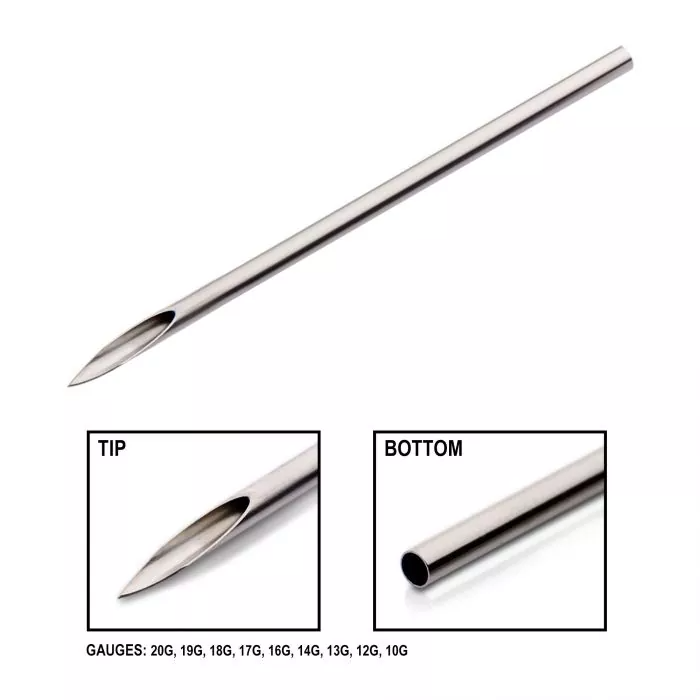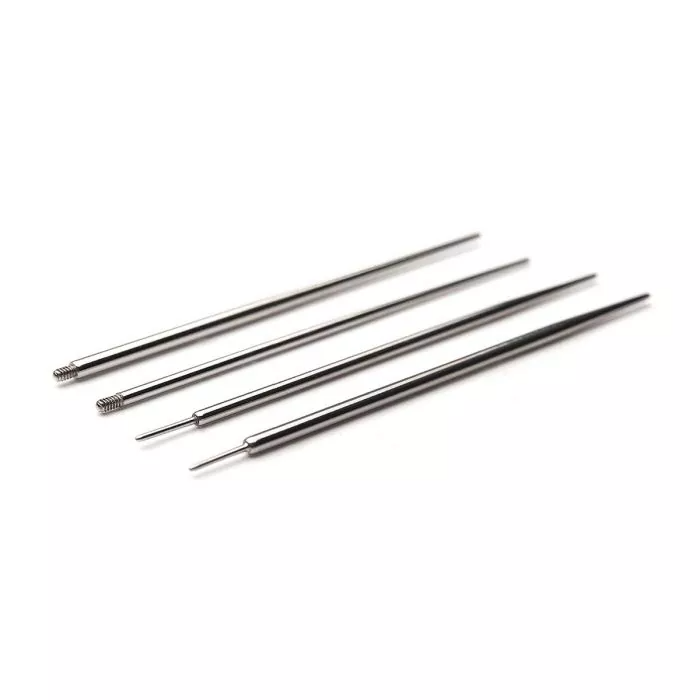Let’s talk about…
Re-opening piercings!
It happens all the time- a client comes into the studio, they haven’t had jewelry in their piercing for a while, and they’ve tried, but can’t get any jewelry back in. The struggle is real.
While this could suggest that the piercing has fully closed, this isn't always the case. Sometimes, the piercing remains open, but has simply reduced in size and shrunk.
Let's discuss!
First things first,
How do piercings stay open?
Piercings stay open due to the presence of a “fistula” more commonly referred to as a “piercing channel.” The fistula is essentially a tunnel of healed scar tissue that forms around the jewelry. This fistula keeps the hole open by maintaining a pathway through the skin.
How do piercings shrink or close?
During the healing process, the body treats the piercing as a wound and attempts to heal and close it. This is why jewelry is crucial- it acts as structural support. When the jewelry is removed the fistula naturally contracts and shrinks. The lack of jewelry could lead the piercing channel to close, as the body responds to the absence of that support.
At the studio, we're often asked: “How long before my piercing closes up?”
This question, unfortunately, has no solid answer. The fate of whether a piercing stays open, shrinks, or closes depends on how the body heals. Which, of course, will vary from person to person. If a piercing is fresh or healing when the jewelry is removed, it has the potential to close up quite quickly. And it will close much faster than an older piercing with a well-established fistula.
Is the piercing closed or shrunken?
A fully closed piercing will have no visible hole, while a shrunken piercing might still have a small indentation or dimple, or sometimes even a visible hole. A shrunken piercing channel may allow for re-opening and jewelry insertion, while a fully closed channel will require re-piercing. To determine whether a piercing is closed or partially open, a piercer will step in to assess the situation.
How do we reopen a shrunken piercing?
For this service, we use a taper. But these are not at all like the ones you used to buy at Hot Topic. Professional tapers, among other things, are longer and designed with a gradually increasing diameter along its length. The gradual increase in width will help to ensure a gentle stretching process and minimize trauma. Tapering is usually preferable for the client, as it allows them to skip the healing process associated with a new piercing.
Re-Piercing
First, the piercer will check to see if the original piercing site is suitable for re-piercing.
Re-piercing will involve the use of a hollow needle to make a new piercing channel. There are some situations where your piercer may recommend against re-piercing or waiting before doing so. For example, if too much scar tissue is present a re-pierce may be advised against, or if a piercing is partially closed, you may have to wait until it heals completely. Your piercer will offer guidance based on your individual situation. Whether it involves waiting or exploring alternative solutions, seeking professional advice is essential.
Here's a quick recap...
Piercing Needles VS Tapers
Piercing Needle:
- A piercing needle is a sharp, hollow needle specifically
 designed for creating the initial hole during piercing
designed for creating the initial hole during piercing
- Piercing needles come in various sizes, with each size suitable for different types of piercings and body parts.
Insertion Taper:
- A taper is a blunt-ended tool used to guide jewelry through a healed piercing or stretch a piercing.
- Tapers come in various sizes, matching the gauge of the jewelry b
 eing inserted or stretched.
eing inserted or stretched. - A taper gradually widens, making it easier to insert larger jewelry into the piercing without causing excessive trauma or discomfort.
- Insertion tapers are often used with jewelry, whereas piercing needles are used independently.
It's important to note that stretching/tapering must be done gradually, and the use of tapers should be performed by a professional piercer to ensure proper technique and minimize the risk of complications. Additionally, not all piercings are suitable for stretching, and it's essential to follow appropriate aftercare instructions provided by your piercer.
Know someone who thinks their piercings are closed for good? Share this with them!
